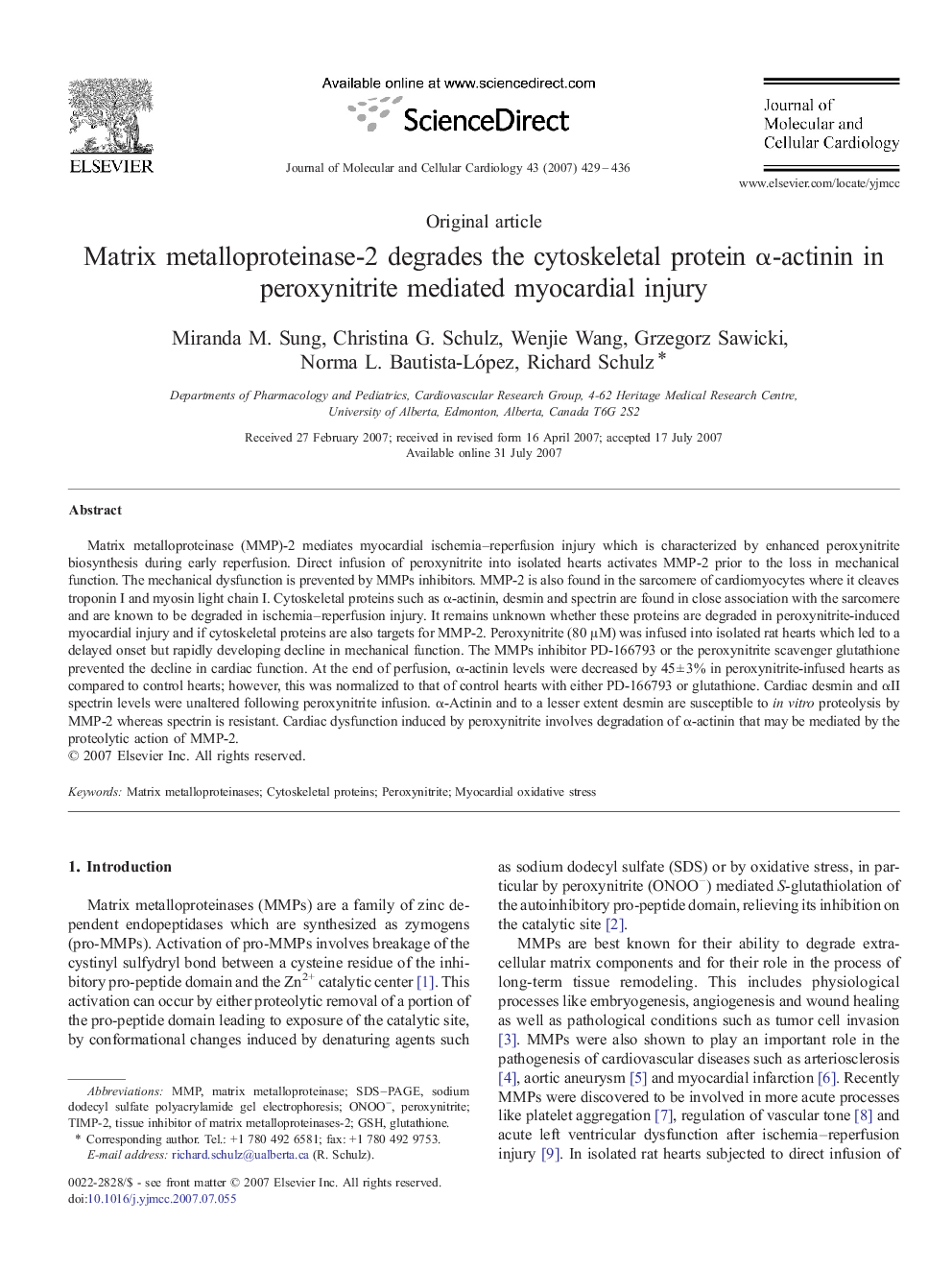| Article ID | Journal | Published Year | Pages | File Type |
|---|---|---|---|---|
| 2191924 | Journal of Molecular and Cellular Cardiology | 2007 | 8 Pages |
Matrix metalloproteinase (MMP)-2 mediates myocardial ischemia–reperfusion injury which is characterized by enhanced peroxynitrite biosynthesis during early reperfusion. Direct infusion of peroxynitrite into isolated hearts activates MMP-2 prior to the loss in mechanical function. The mechanical dysfunction is prevented by MMPs inhibitors. MMP-2 is also found in the sarcomere of cardiomyocytes where it cleaves troponin I and myosin light chain I. Cytoskeletal proteins such as α-actinin, desmin and spectrin are found in close association with the sarcomere and are known to be degraded in ischemia–reperfusion injury. It remains unknown whether these proteins are degraded in peroxynitrite-induced myocardial injury and if cytoskeletal proteins are also targets for MMP-2. Peroxynitrite (80 μM) was infused into isolated rat hearts which led to a delayed onset but rapidly developing decline in mechanical function. The MMPs inhibitor PD-166793 or the peroxynitrite scavenger glutathione prevented the decline in cardiac function. At the end of perfusion, α-actinin levels were decreased by 45 ± 3% in peroxynitrite-infused hearts as compared to control hearts; however, this was normalized to that of control hearts with either PD-166793 or glutathione. Cardiac desmin and αII spectrin levels were unaltered following peroxynitrite infusion. α-Actinin and to a lesser extent desmin are susceptible to in vitro proteolysis by MMP-2 whereas spectrin is resistant. Cardiac dysfunction induced by peroxynitrite involves degradation of α-actinin that may be mediated by the proteolytic action of MMP-2.
